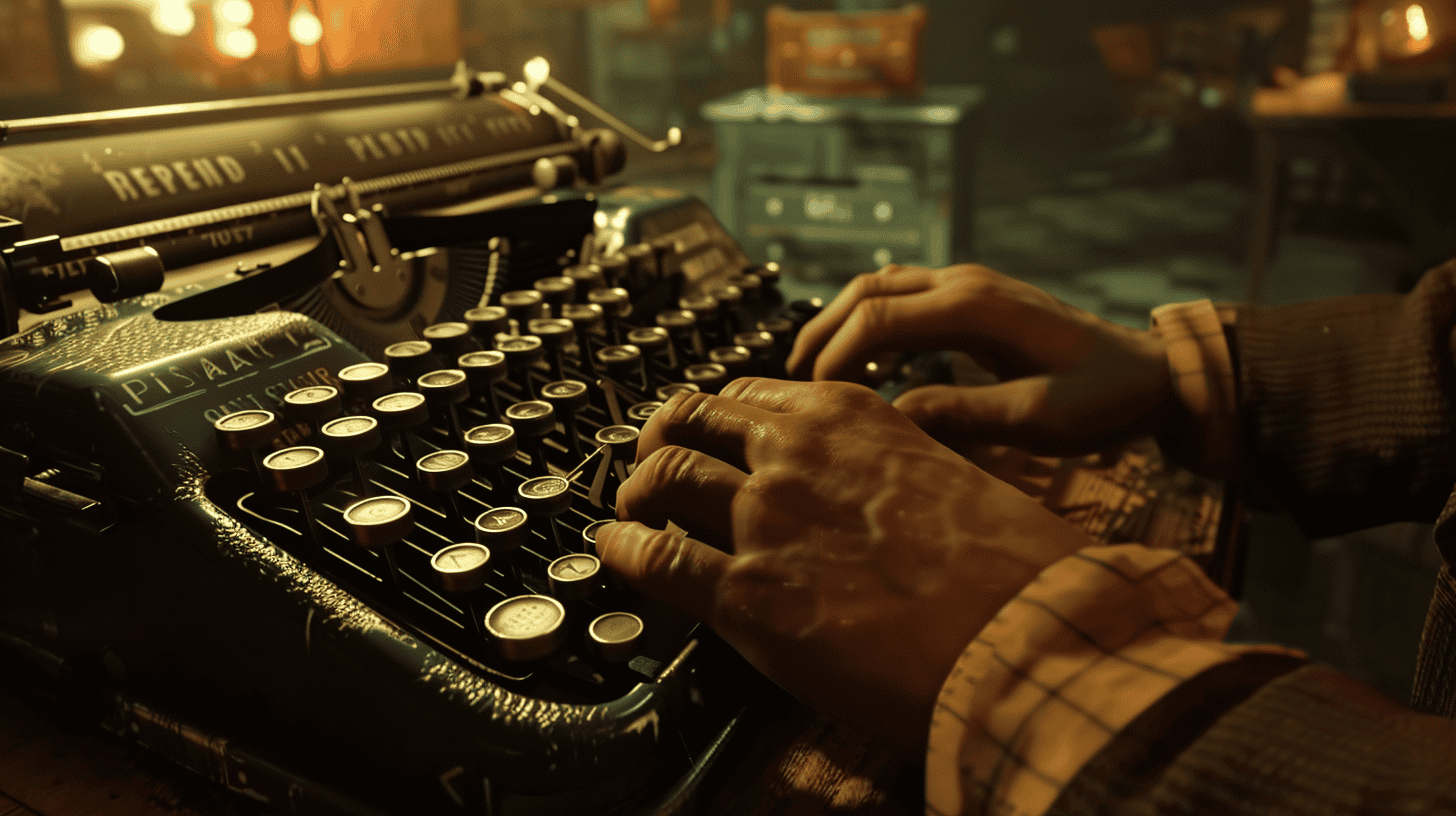Dialogue is at the heart of storytelling. It’s the tool that breathes life into characters, adds authenticity to relationships, and moves a story forward with natural flow. Think about a favorite book or movie—chances are, it’s the conversations between characters that left a lasting impression. Good dialogue doesn’t just communicate words; it reveals personalities, secrets, and motivations, often with just a few lines.
But what makes dialogue truly “good”? Crafting realistic, engaging dialogue can be one of the biggest challenges for writers. In this guide, you’ll discover the essentials of writing dialogue—from getting the basics right and giving each character a unique voice to making every line matter. Soon, you’ll have the know-how to create conversations that captivate readers, making them feel like they’re listening in on real, memorable exchanges. Let’s get started!
Key Takeaways
- Good dialogue adds depth to characters and strengthens reader engagement, making conversations feel real and immersive.
- Effective dialogue balances natural language with purpose, revealing character traits and advancing the plot without unnecessary filler.
- Dialogue can be categorized into inner (thoughts) and outer (spoken) dialogue, each serving distinct narrative functions.
- Crafting distinctive character voices involves considering personality, background, and unique speech patterns for each character.
- Common challenges in dialogue writing include avoiding overly dense language, maintaining historical accuracy, and using eye dialect sparingly.
- Polishing dialogue through careful editing enhances flow and readability, ensuring each line serves the story.
Understanding the Basics of Dialogue Writing

Crafting dialogue that feels real and serves the story begins with understanding its role and purpose. Before you start putting words in your characters’ mouths, you need to know what makes dialogue work—and why it’s so much more than just characters talking.
What Is Dialogue?
At its core, dialogue is any spoken exchange between characters in a story. It brings readers into the moment, allowing them to experience scenes in real time. Dialogue adds layers to the narrative, from advancing the plot to revealing a character’s thoughts and emotions. When written well, dialogue pulls readers closer to your characters and the world they inhabit.
Dialogue vs. Narrative
While dialogue is the direct speech between characters, narrative provides the story’s broader context, description, and internal thoughts. Understanding this difference helps you decide when to let a character speak and when to rely on the narrative to move the story forward. Dialogue lets readers “hear” characters, while narrative fills in details they can’t see or hear.
Think of it this way: dialogue is like a camera zooming in, capturing a live moment, while narrative zooms out, offering a broader perspective. Striking a balance between the two is key to creating a seamless reading experience.
Types of Dialogue
There are two main types of dialogue writers use in their work: inner and outer dialogue.
Inner Dialogue
Inner dialogue represents the thoughts and reflections a character has within their mind. This inner conversation often appears as a monologue, revealing a character’s personal thoughts or internal conflicts. Typically, inner dialogue isn’t enclosed in quotation marks; some writers choose to italicize it to distinguish it from spoken words.
Outer Dialogue
Outer dialogue is the spoken exchange that happens between characters in a story. This is the dialogue enclosed in quotation marks, capturing the back-and-forth between two or more characters as they interact, share information, and reveal personality through spoken words.
Related article: What is narrative writing?
How Do I Write Dialogue That Feels Real and Engaging?
Now that’s a question many people are asking! Writing dialogue that sounds natural is essential to keeping readers invested in your story. Great dialogue should feel like a real conversation, pulling readers into the moment and allowing them to connect with your characters.
If you want to create dialogue that feels authentic and engaging, try:
Using Natural Language
To make dialogue believable, aim to capture the way people actually speak. Real conversations often include short sentences, pauses, and even unfinished thoughts. Avoid overly formal language or forcing characters to speak in complete sentences unless it fits their personality. For example, instead of having a character say, “I am unsure if I should attend,” try, “I don’t know if I should go.” This subtle shift makes the dialogue sound more conversational and relatable.
Avoiding Info Dumping
It can be tempting to use dialogue to explain backstory or key plot points, but this can quickly feel forced. When characters talk solely to deliver information, it breaks immersion and makes the dialogue feel unnatural. Instead, reveal information gradually, letting readers piece things together. For example, instead of one character explaining an entire situation, hint at the backstory through brief, natural exchanges.
Including Subtext
One of the most powerful elements of dialogue is subtext—the unspoken thoughts and emotions beneath the surface. Not everything your characters think or feel should be said out loud. Use body language, pauses, and implied meaning to show more than just words. For instance, a character who says, “Sure, I don’t mind,” while looking away might be hiding their true feelings, letting readers infer there’s more going on.
Related Article: Guide to Writing a Manuscript
How To Create a Dialogue for Distinctive Characters?

When writing dialogue, it’s important to give each character a unique voice that reflects their personality, background, and emotions. Well-crafted dialogue not only makes each character memorable but also gives readers insight into who they are and how they relate to others.
Below, you’ll find key tips for writing distinctive character dialogue:
Character-Specific Language
Every character should have their own way of speaking. Consider each character’s background, education, and personality traits when choosing their vocabulary, tone, and speech patterns. For example, a confident character might use short, direct sentences, while a more thoughtful character may pause often or choose words carefully. Think about what makes each character unique and let that shape how they speak.
Using Dialogue to Show Relationships
Dialogue is one of the most effective tools for revealing relationships between characters. Pay attention to how characters address each other—whether with formal titles, nicknames, or even terms of endearment. The way characters speak to each other can reveal dynamics like friendship, rivalry, respect, or tension. For example, close friends may use casual or humorous language, while characters who are less comfortable with each other may sound more polite or guarded.
Developing Voice Consistency
To make sure each character’s dialogue feels consistent, think about how they would respond in various situations. If you have a shy character, they’re unlikely to dominate a conversation, while an assertive character may speak without hesitation. Maintaining a consistent voice for each character helps readers connect with them on a deeper level, making the dialogue—and the story—more immersive.
Related article: Essential story writing tips
Common Mistakes in Dialogue Writing and How to Avoid Them

Even with the best intentions, certain habits in dialogue writing can make conversations feel awkward or inauthentic. Here are some common mistakes to watch out for and tips on how to avoid them:
Overusing Slang or Accents
While adding a bit of slang or an accent can make a character feel more real, overdoing it can be distracting or hard to read. Too much slang dates the dialogue, and excessive phonetic accents may frustrate readers. Instead, use these elements sparingly—just enough to give a sense of the character’s background without overwhelming the reader.
Too Much Small Talk
In real life, conversations are filled with small talk, but in writing, it can slow down the pace and make scenes feel unnecessary. Every line of dialogue should have a purpose, whether it’s revealing something about a character, advancing the plot, or building tension. Instead of beginning a conversation with greetings or pleasantries, jump into the heart of the exchange to keep readers engaged.
Dense, Unrealistic Speech
Dialogue doesn’t have to follow strict grammar rules. In fact, when dialogue is too grammatically correct, it can make characters sound stiff or overly formal. Real people use contractions, sentence fragments, and even filler words, so don’t be afraid to keep things casual. Allowing a natural flow helps your characters feel more relatable and realistic.
Eye Dialect
Eye dialect involves spelling words to reflect a character’s mispronunciations, like using “wuz” instead of “was.” Although certain common uses, like “fella” for “fellow” or “‘em” for “them,” are generally acceptable, too much eye dialect can make dialogue harder to read and may unintentionally create offensive caricatures. When in doubt, use eye dialect sparingly to keep your dialogue accessible and respectful.
Dialogue Tags that Distract
Tags like “he shouted angrily” or “she whispered softly” can often be replaced by the dialogue itself or a simple “said” or “asked.” If the dialogue is written well, the tone and emotion will come through naturally, and readers won’t need elaborate tags to understand the context. Use action tags (like “He clenched his fists”) sparingly as well to show emotion rather than telling it.
Related article: Ultimate copywriting tips for beginners
How to Do Dialogue Editing: Polishing Your Dialogue
Once you’ve crafted your dialogue, the next step is editing to ensure it flows naturally and serves its purpose in the story. You can refine your dialogue writing by doing this:
Read Aloud for Flow
Reading dialogue out loud is one of the most effective ways to catch awkward phrasing or unnatural rhythm. When you hear the words spoken, you’ll be able to tell if the conversation sounds authentic or if it needs a few tweaks. If something feels off, try shortening sentences to create a more realistic exchange.
Cut Unnecessary Words
Good dialogue is often concise. As you edit, look for words or phrases that don’t add value or slow down the pace. Removing filler words and trimming lengthy explanations can make your dialogue sharper and more impactful. Every line should have a purpose—whether to reveal character, advance the plot, or build tension.
Try Online Editing Tools
Editing tools can be incredibly helpful for polishing dialogue. These tools highlight overused words, suggest synonyms, and can even provide insights into readability and tone. While nothing replaces a careful read-through, tools like these can be a great support in tightening and refining your work, ensuring your dialogue flows smoothly and effectively.
Related article: How to edit a book
Master Dialogue Writing to Elevate Your Story
Writing good dialogue can transform a story, turning it into an immersive experience that brings readers closer to your characters and the world they inhabit. By crafting natural, purposeful dialogue, you allow readers to connect with your characters on a deeper level, making every interaction memorable and meaningful.
Remember that dialogue doesn’t need to be perfect—it just needs to feel real. Whether you’re giving each character a distinct voice, refining the flow of conversation, or using subtle subtext to convey hidden emotions, the key is practice and polish. Keep experimenting, edit with a critical eye, and embrace feedback to continue improving.
With the right approach, you’ll create dialogue that not only sounds good but also enhances your story’s impact. So dive into the process, enjoy the creative journey, and let your characters’ voices truly shine.
Explore Voxtury’s online text editing tools to enhance your writing.
SOURCES
At Voxtury, we prioritize using high-quality sources, including peer-reviewed studies, to ensure our articles are accurate, reliable, and trustworthy. To learn more about our commitment to quality and how we fact-check our content, please visit our editorial process page.
- Bransford, N. – How to write good dialogue in a novel
- Merriam-Webster. (n.d.) – Dialogue definition and meaning
- Wayne, T. (n.d.) – Tips for Writing Dialogue